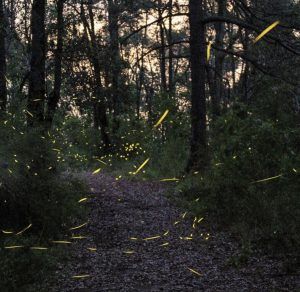Eric Boodman in STAT News:
 A few hours after sunset one night in July of 2016, a Ph.D. student walked into a New Jersey hotel carrying a bouquet of butterfly nets. The travelers who usually occupy the place looked up from their lonely business trips, curious to hear what Tim Fallon had caught. Tangled up in the mesh, he said, were about 100 fireflies, freshly nabbed from a local meadow as they blinked their way toward reproductive fulfillment.
A few hours after sunset one night in July of 2016, a Ph.D. student walked into a New Jersey hotel carrying a bouquet of butterfly nets. The travelers who usually occupy the place looked up from their lonely business trips, curious to hear what Tim Fallon had caught. Tangled up in the mesh, he said, were about 100 fireflies, freshly nabbed from a local meadow as they blinked their way toward reproductive fulfillment.
He’d interrupted their mating dance for a worthy cause: figuring out how these insects first acquired the ability to glow — and hopefully, in the process, finding better laboratory tools for studying disease and developing treatments. Now, two years later, his team from the MIT-affiliated Whitehead Institute is publishing this firefly’s genome for the first time. It will appear next week in the journal eLife.
Among the key results: Bioluminescence evolved separately in fireflies and certain other species of beetles. But the findings won’t just be scoured by entomologists and evolutionary biologists.
“The data provided can (will) be used by others,” said Hugo Fraga, a biochemist at the Institut de Biologie Structurale, in Grenoble, France, who has done research on firefly chemistry, and who was not involved in this study. “The same way the human genome … provides a map for other researchers.”
More here.
